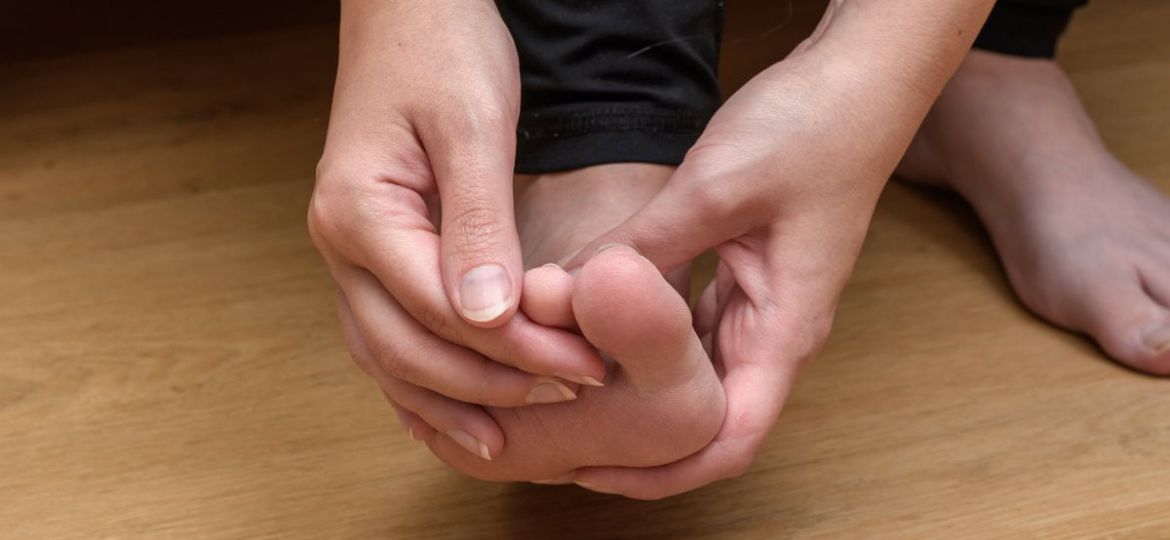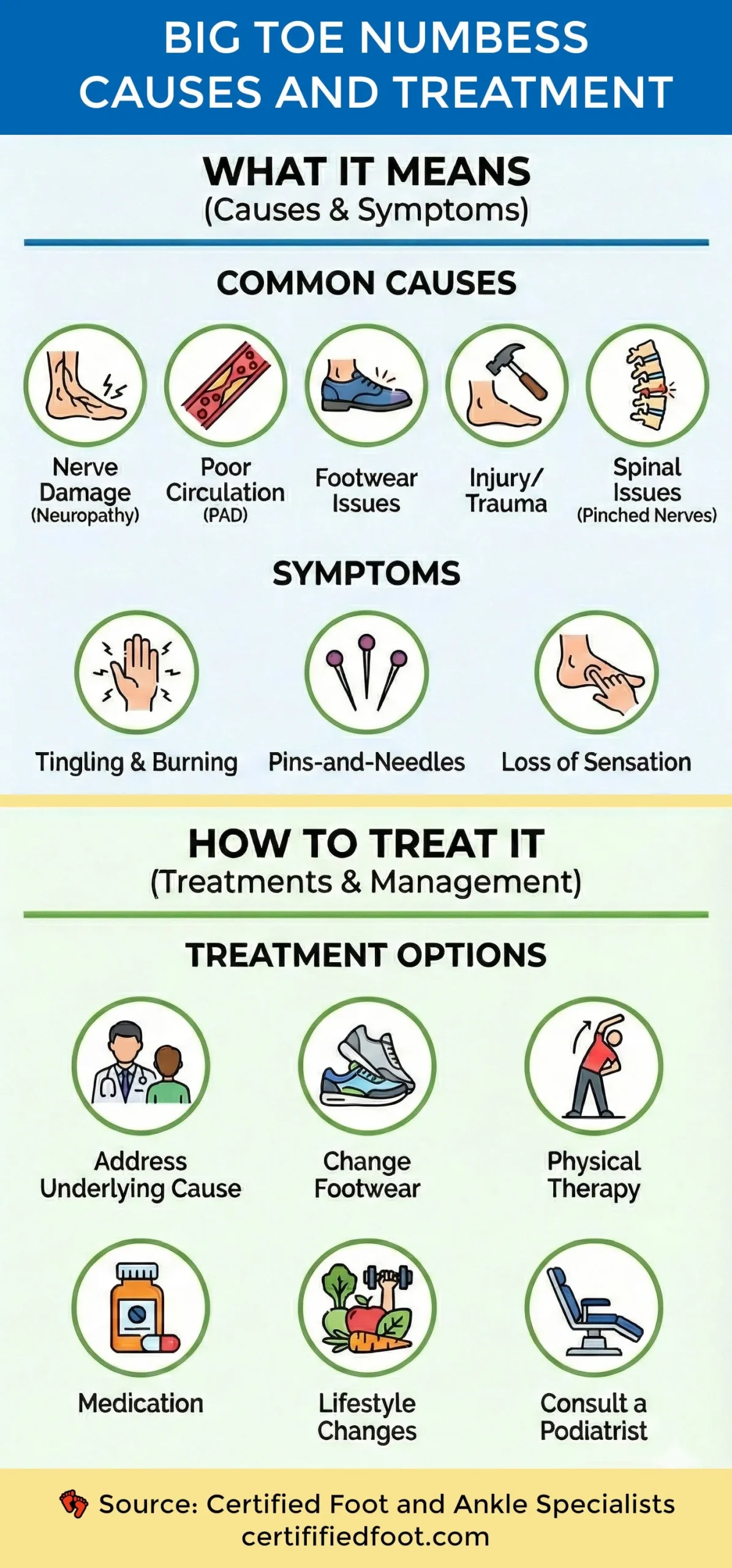
If you have spent the last few days watching the Olympics and seeing gymnasts perform incredible feats, you might be inspired to push your physical limits. But what happens when you start to feel a strange numbness in your big toe? This condition, often stemming from issues with blood vessels and nerves in the foot and ankle, can affect anyone, from amateur athletes to elite gymnasts.
The sensation of pins and needles, known as peripheral neuropathy, can be particularly concerning for those who rely on their feet for balance and agility. Whether you’re a dedicated gymnast or someone who’s recently taken up a new physical challenge, understanding the causes and solutions for big toe numbness is essential for keeping your feet healthy and your performance at its best.
Understanding the symptoms and causes is crucial for effective management and prevention.
Symptoms:
- Numbness and Tingling: The most common symptom is a loss of sensation or a tingling feeling in the big toe. This sensation, often described as pins and needles, can be intermittent or constant.
- Pain and Burning: In some cases, numbness is accompanied by a burning sensation or sharp pain, which can affect mobility and comfort.
- Weakness: Some individuals may experience muscle weakness in the affected toe, leading to difficulties in balance and movement.
Causes:
- Nerve Compression: One of the primary causes of big toe numbness is nerve compression. This can occur due to various factors, such as prolonged sitting, repetitive movements, or injury. Compression of the nerves in the foot and ankle can lead to numbness and tingling sensations.
- Blood Sugar Levels: High blood sugar levels, commonly associated with diabetes, can damage the nerves over time. This condition, known as diabetic neuropathy, often starts with numbness in the extremities, including the big toe.
- Wearing Shoes That Are Too Tight: Tight shoes can compress the nerves and blood vessels in the feet, leading to numbness. It is essential to wear properly fitting footwear to avoid this issue.
- Medical Condition: Underlying medical conditions, such as peripheral artery disease, multiple sclerosis, or vitamin deficiencies, can also lead to numbness in the big toe. These conditions can impair blood flow or nerve function, resulting in sensory changes.
Recognizing these symptoms and understanding the causes can help in taking appropriate measures to alleviate big toe numbness and maintain foot health.
Effective Treatment Options for Big Toe Numbness
When dealing with big toe numbness, it’s important to identify the underlying cause to determine the most effective treatment options. Here are some detailed approaches:
- Addressing Nerve Compression: If nerve compression is the cause, physical therapy exercises to improve flexibility and strength can alleviate pressure on the nerves. In severe cases, surgical intervention may be required to relieve the compression.
- Managing Blood Sugar Levels: For those with diabetes, maintaining stable blood sugar levels is crucial. This can be achieved through a combination of medication, diet, and regular monitoring. Proper management can prevent further nerve damage and reduce symptoms of numbness.
- Improving Blood Flow: Enhancing blood flow to the affected area can help reduce numbness. This can be done through regular exercise, which promotes circulation, and avoids prolonged periods of inactivity. Massaging the foot and using warm compresses can also improve blood flow.
- Proper Footwear:Wearing well-fitting shoes that offer proper support is crucial. Avoid shoes that are too tight as they can compress nerves and restrict blood flow, leading to numbness.
- Protecting Against Cold Weather: Cold weather can exacerbate numbness. Keeping feet warm with appropriate footwear and socks can help maintain blood flow and prevent the feeling of numbness.
Medical Conditions: Treating underlying health conditions such as peripheral artery disease or vitamin deficiencies can alleviate symptoms. This may involve medication, dietary changes, and supplements as recommended by a healthcare professional. - Spinal Health: Issues with the spinal cord can also cause numbness in the extremities. Chiropractic care, physical therapy, or surgical options may be necessary to address spinal health and reduce nerve-related symptoms.
If you are experiencing persistent numbness in your big toe, consult a healthcare provider to determine the best treatment options for your specific condition.
What Else Can You Do To Make Sure You Don’t Suffer from Big Toe Numbness?
Beyond the treatment options and causes discussed, there are several other important aspects to keep in mind when dealing with big toe numbness:
- Regular Monitoring: Keep track of your symptoms, noting when they occur, their severity, and any potential triggers. This information can be invaluable for healthcare providers in diagnosing the underlying cause and recommending appropriate treatments.
- Lifestyle Modifications: Adopting a healthier lifestyle can have a significant impact on reducing symptoms. This includes maintaining a balanced diet, staying hydrated, and avoiding excessive alcohol consumption, which can exacerbate nerve damage.
- Weight Management: Maintaining a healthy weight reduces pressure on the feet and improves overall circulation, potentially alleviating numbness.
- Avoiding Repetitive Stress: If your activities involve repetitive movements that strain the feet, such as running or certain sports, ensure you have proper technique and take breaks to prevent overuse injuries.
- Stress Management: High levels of stress can impact overall health and exacerbate symptoms. Techniques such as meditation, yoga, or other relaxation methods can help manage stress levels and improve overall well-being.
- Educating Yourself: Stay informed about your condition and any new treatments or recommendations. Being knowledgeable empowers you to make informed decisions about your health and advocate for the best care possible.
Understanding and addressing these additional considerations can help manage big toe numbness more effectively and improve your overall quality of life.
When To Consult a Specialist
Depending on the suspected cause, you may benefit from consulting a podiatrists at Certified Foot and Ankle Specialists. Our professionals can provide targeted treatment and advice tailored to your specific condition. They are trained to diagnose and treat a wide range of foot and ankle issues, ensuring you receive the most effective care. We have foot clinics across South East Florida such as West Palm Beach, Fort Lauderdale, Boca Raton, and Vero Beach. On the west coast, our foot clinics are located in St. Petersburg, Palm Harbor, Brandon, Tampa and Fort Myers. For a full list visit our locations page.
Schedule an appointment and bid goodbye to today’s numbness!




